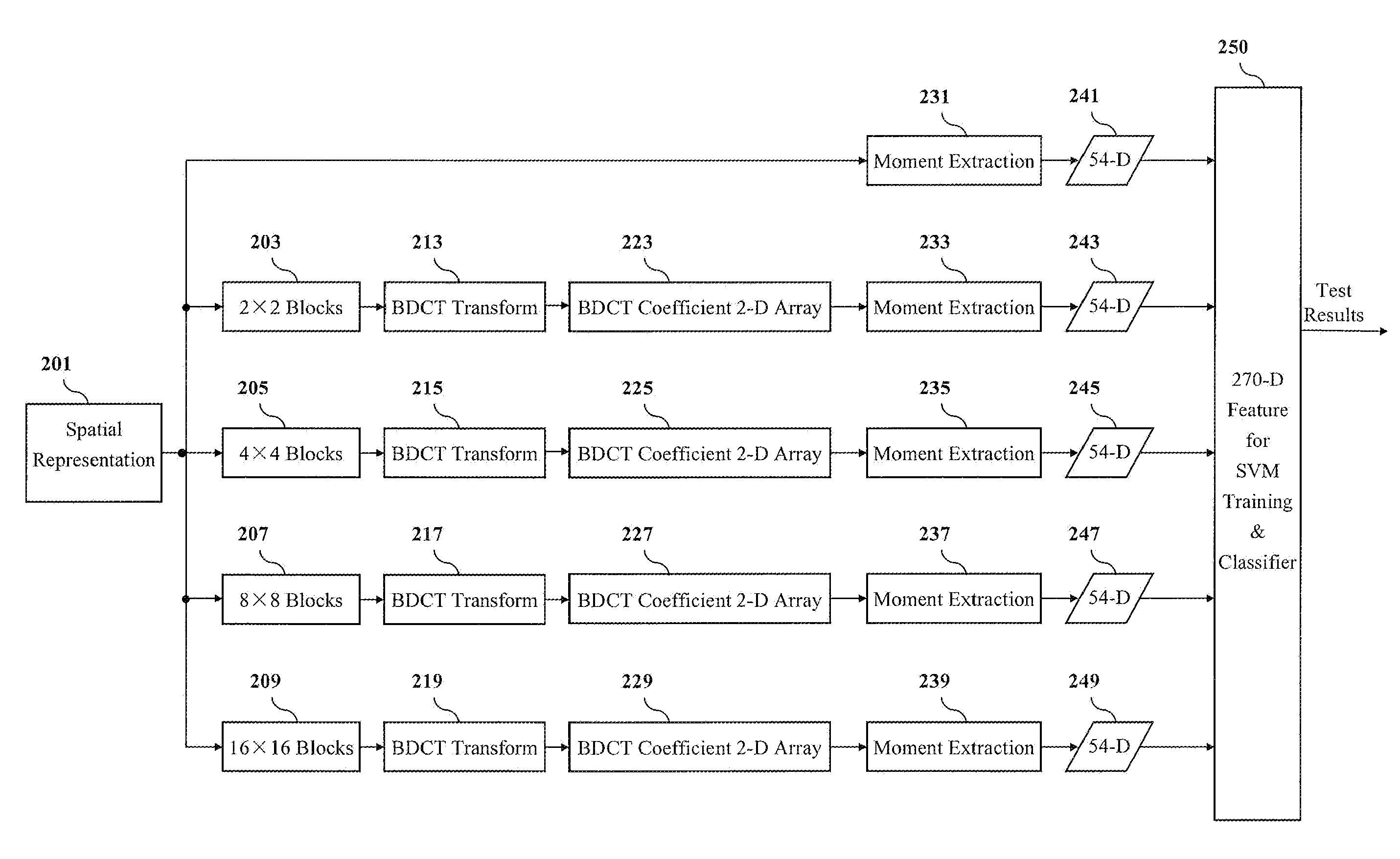Method and apparatus for steganalysis for texture images
a texture image and steganography technology, applied in the field of steganography, can solve the problems of difficult steganography, inability to know whether you really have content being used for hidden information transport, and difficulty in implementing effective steganography methods for images,
- Summary
- Abstract
- Description
- Claims
- Application Information
AI Technical Summary
Benefits of technology
Problems solved by technology
Method used
Image
Examples
Embodiment Construction
[0032]As discussed above, texture images are generally noisy. As a result, when background art methods for steganalysis are applied to texture images, the embedded signal is submerged in noise and is very difficult to detect. A detailed description / definition of “texture” suggests: “[t]he notion of texture appears to depend upon three ingredients: (1) some local ‘order’ is repeated over a region which is large in comparison to the order's size; (2) the order consists in the nonrandom arrangement of elementary parts; and (3) the parts are roughly uniform entities having approximately the same dimensions everywhere within the textured region,” and was given in J. K. Hawkins, “Textural Properties for Pattern Recognition”, Picture Processing and Psychopictoris, B. C. Lipkin and A. Rosenfeld (editors), Academic Press, New York, 1970, pp 347-370. In addition, the term “texture is used to describe two dimensional arrays of variations” in R. M. Pickett, “Visual Analysis of Texture in the De...
PUM
 Login to View More
Login to View More Abstract
Description
Claims
Application Information
 Login to View More
Login to View More - R&D
- Intellectual Property
- Life Sciences
- Materials
- Tech Scout
- Unparalleled Data Quality
- Higher Quality Content
- 60% Fewer Hallucinations
Browse by: Latest US Patents, China's latest patents, Technical Efficacy Thesaurus, Application Domain, Technology Topic, Popular Technical Reports.
© 2025 PatSnap. All rights reserved.Legal|Privacy policy|Modern Slavery Act Transparency Statement|Sitemap|About US| Contact US: help@patsnap.com



